Nicaragua Flag Meaning
Three horizontal stripes of blue, white, and blue with the national coat of arms centered on the white stripe, representing Nicaragua's position between two oceans and its revolutionary ideals of liberty and peace.
- Continent
- North America
- Adopted
- 1971
- Ratio
- 3:5
- Colors
- blue, white
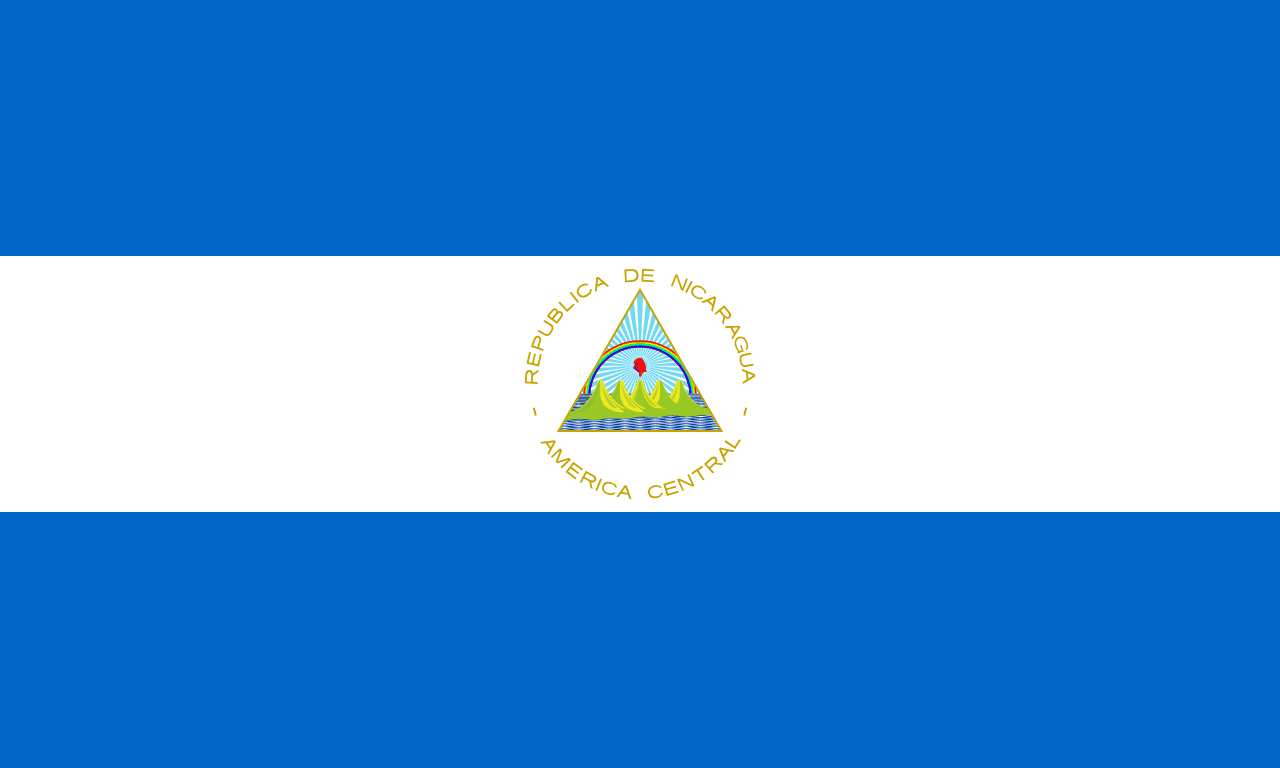
Symbolism
Blue Stripes: Represent the Pacific Ocean and Caribbean Sea that border Nicaragua on the west and east, symbolizing the country's unique position as the largest Central American nation between two bodies of water.
White Stripe: Symbolizes peace, purity, and the land of Nicaragua between the two seas. Also represents the noble ideals of the nation and the desire for harmony among Central American peoples.
Equilateral Triangle: The triangle in the coat of arms represents equality and the three branches of government (executive, legislative, judicial), while its perfect shape symbolizes the pursuit of perfect justice.
Five Volcanoes: Represent the five original members of the Central American Federation and Nicaragua's volcanic landscape, including active volcanoes that have shaped both the geography and culture of the country.
Rainbow and Cap of Liberty: The rainbow symbolizes peace and hope after conflict, while the red Phrygian cap represents liberty and freedom, reflecting Nicaragua's revolutionary heritage and democratic aspirations.
History
- 1821-1823: After independence from Spain, Nicaragua briefly used various flags before joining the Central American Federation, which established the blue and white color scheme.
- 1823-1838: As part of the Federal Republic of Central America, Nicaragua used the federation's blue and white flag, establishing these colors as symbols of Central American unity.
- 1838-1854: After the federation's collapse, Nicaragua adopted various flag designs while maintaining the blue and white colors, reflecting continued Central American identity.
- 1854-1889: Nicaragua used different flag designs including variants with stars and stripes, influenced by both Central American traditions and North American republican symbols.
- 1889-1971: Various versions of the blue-white-blue design were used with different coats of arms, reflecting political changes but maintaining the basic Central American color scheme.
- August 27, 1971: The current flag was officially adopted with the detailed specifications for the coat of arms, establishing the definitive version still used today.
- 1979-1990: During the Sandinista revolution and government, the flag remained unchanged, demonstrating its acceptance across different political movements as a symbol of national identity.
Trivia
- Nicaragua's flag is one of only two national flags that include a rainbow in their official design, the other being that of the Cook Islands.
- The coat of arms features the words 'República de Nicaragua - América Central' (Republic of Nicaragua - Central America), emphasizing regional identity.
- The triangle in the coat of arms is surrounded by the text 'América Central' reflecting Nicaragua's continued identification with Central American unity despite the federation's collapse.
- Nicaragua shares the blue and white color scheme with other former Central American Federation members: Guatemala, El Salvador, Honduras, and Costa Rica.
- The five volcanoes in the coat of arms represent not only the original federation members but also Nicaragua's location on the Pacific Ring of Fire.
- The flag protocol requires the coat of arms to appear on both sides of the flag, making it more expensive to produce than simpler flag designs.
- During the civil wars of the 1970s-1980s, the flag remained a unifying symbol despite being used by opposing sides in the conflict.
- The Phrygian cap in the coat of arms connects Nicaragua to the broader tradition of liberty symbols used during the Age of Revolutions.
- Nicaragua's flag appears on the country's córdoba banknotes alongside images of national heroes and landmarks, reinforcing patriotic identity.
- The flag's design influenced by Masonic symbolism reflects the role of Freemasonry in Central American independence movements.
- Lake Nicaragua, the largest lake in Central America, is sometimes called the 'Sweet Sea' and connects to the flag's symbolism of waters surrounding the nation.
- The flag flies prominently during Independence Day celebrations on September 15, shared with other Central American nations as a regional celebration.
- Nicaraguan athletes wear variations of the blue and white colors in international competitions, making the flag colors recognizable in Olympic and Pan-American Games.
- The flag appears in Nicaraguan cultural celebrations and religious festivals, where blue and white decorations honor both national and religious traditions.
- Environmental groups in Nicaragua sometimes reference the flag's rainbow symbol when discussing conservation efforts and the country's biodiversity.
Related Countries
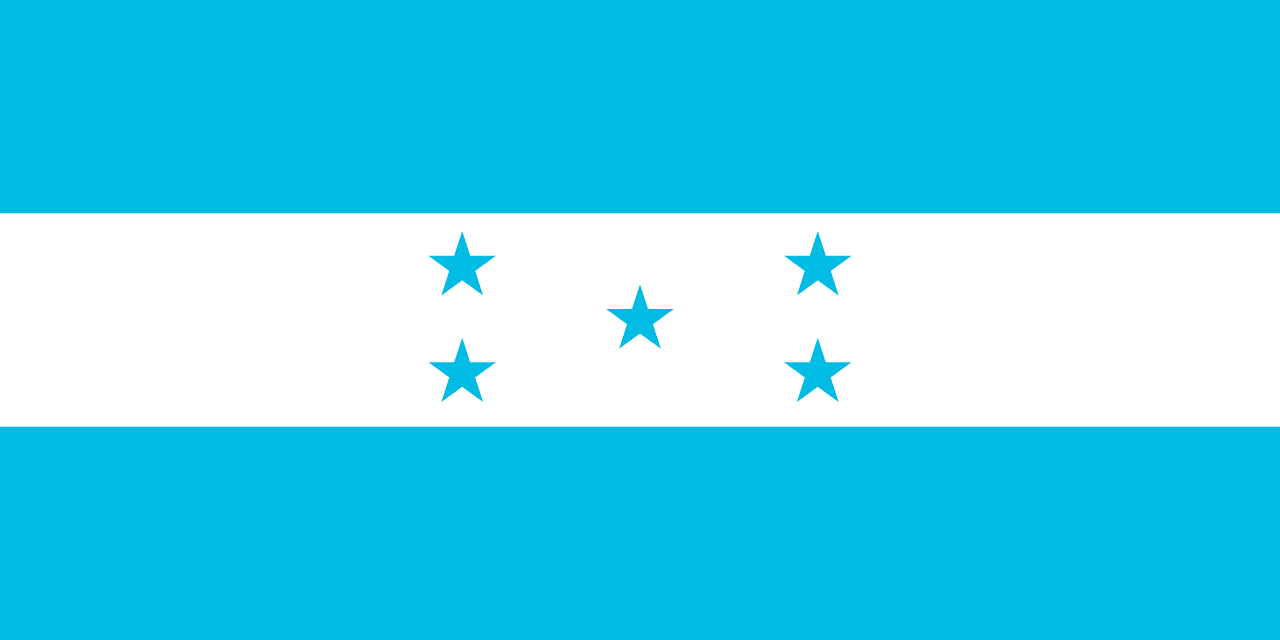
Honduras
North America
Three horizontal stripes of blue, white, and blue with five blue five-pointed stars arranged in an X pattern on the white stripe, representing the Pacific and Atlantic oceans, peace, and the hope for Central American unity.
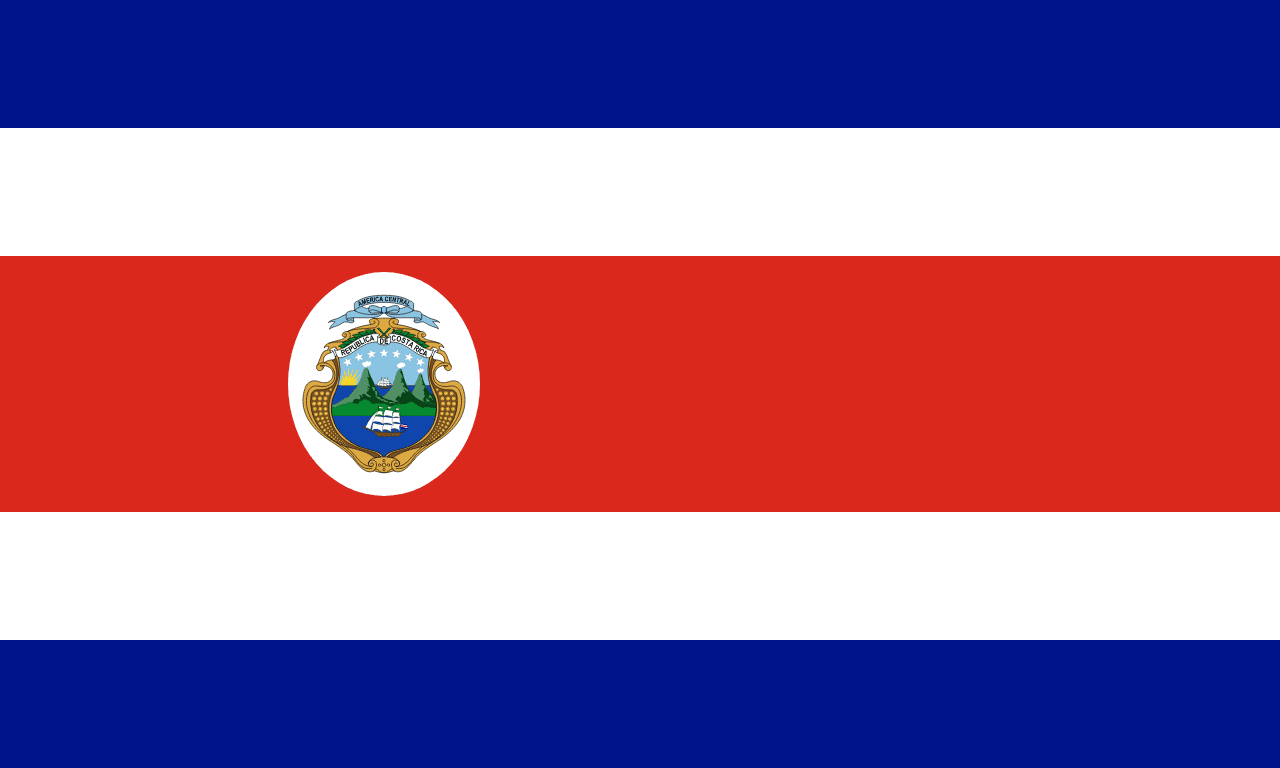
Costa Rica
North America
Five horizontal stripes with blue at top and bottom, white stripes below and above the central red stripe, and the national coat of arms on the red stripe, representing the sky and opportunities, peace, and the warmth of the Costa Rican people.
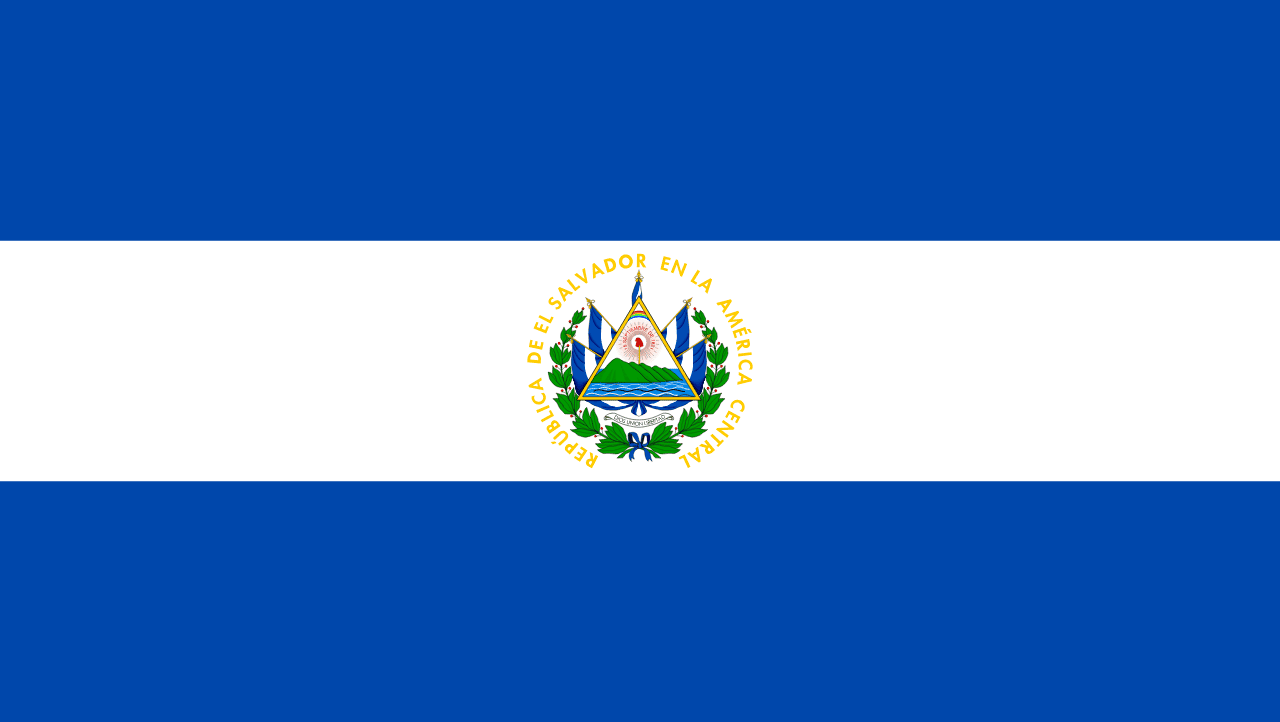
El Salvador
North America
Three horizontal stripes of blue, white, and blue with the national coat of arms centered on the white stripe, representing the Pacific and Atlantic oceans, peace, and the hope for Central American unity.
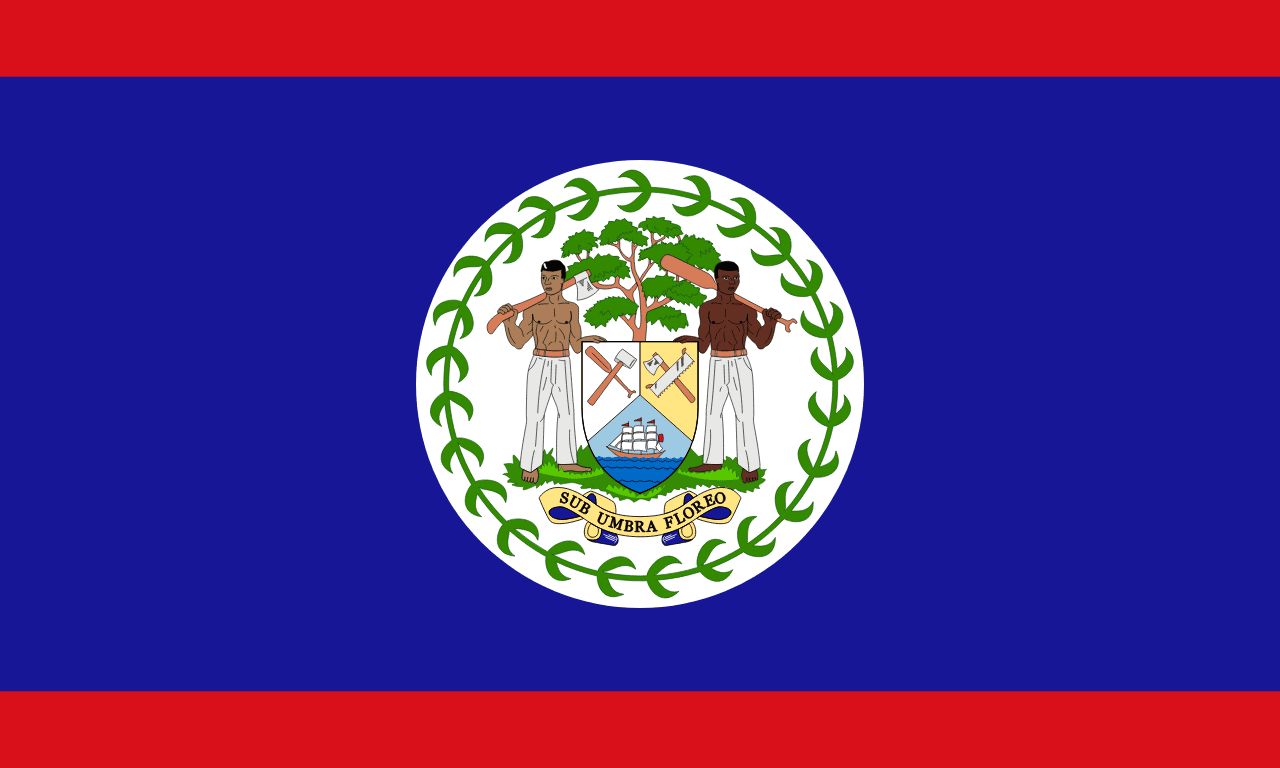
Belize
North America
A blue field with red stripes along the top and bottom edges and the national coat of arms in a white circle at the center, representing the ruling People's United Party, the opposition United Democratic Party, and the peace that unites them, making it the only national flag to feature human figures.

Guatemala
North America
Three vertical stripes of blue, white, and blue with the national coat of arms centered on the white stripe, representing the Pacific and Atlantic oceans, peace, and the sovereignty of the Republic of Guatemala.
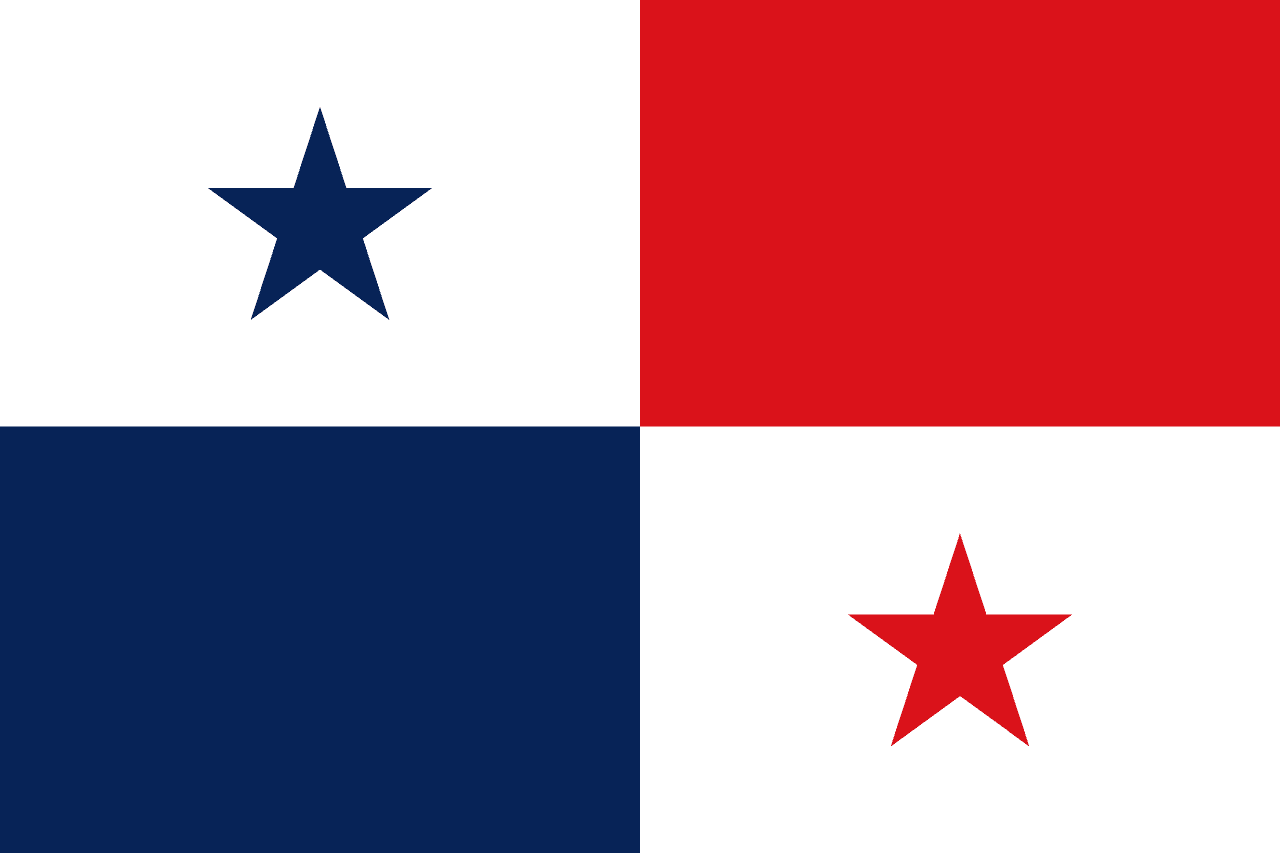
Panama
North America
Quartered flag with white and blue star in top left, red in top right, blue in bottom left, and white with red star in bottom right. The design symbolizes political balance and the ideals of peace and progress.